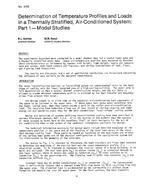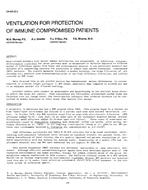Click here to purchase
Several jurisdictions across the globe have begun to adopt net-zero energy or net-zero energy ready targets in their building codes in an effort to reduce energy consumption and greenhouse gas emissions. The majority of work designing and optimizing net-zero buildings has been undertaken for buildings outside the Arctic. Given the unique energy supply and climate challenges for northern buildings, there are potential economic and environmental benefits in considering net-zero energy buildings and systems in the North. This study assesses the feasibility of designing and building to net-zero energy levels of performance in the Arctic. The study simulates the energy performance of a multi-unit residential building (MURB) being constructed in Nunavut to provide affordable housing. The building was modelled in ESP-r to determine space heating demands. ESP-r and TRNSYS simulations were then used to explore energy system concepts. Simulations were performed to evaluate sizing of system components and initial cost comparison of systems was conducted. Limited information and research is available for northern buildings. Given the unique environment of the North, net-zero solutions developed for southern climates are often not suitable. This paper identifies challenges to conventional net-zero building solutions due to renewable resource availability, harsh climate conditions, and higher costs for materials and maintenance. This study also provides an example of real-world application of detailed building performance simulation, the results of which yield a feasibility analysis technical solutions for realizing net-zero energy buildings in the Arctic.
Citation: Thermal Buildings XIV 2019
Product Details
- Published:
- 2019
- Number of Pages:
- 10
- Units of Measure:
- Dual
- File Size:
- 1 file , 1.1 MB
- Product Code(s):
- D-Bldgs19-036


